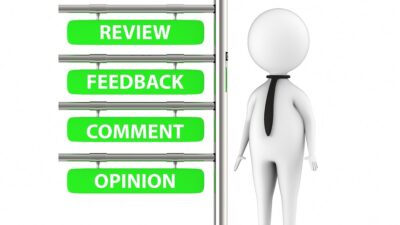In the dynamic landscape of business and personal endeavors, failure often feels inevitable. Whether it’s a product that flopped, a campaign that underperformed, or a personal project that didn’t materialize as envisioned, setbacks can be disheartening. However, what separates successful individuals and organizations from the rest is their ability to learn from these failures and pivot their strategies accordingly. Here, we explore how to embrace failure, extract meaningful lessons, and turn setbacks into stepping stones for future success.
Understanding Failure as a Teacher
First and foremost, it’s important to redefine our relationship with failure. Too often, we equate failure with a dead end, a reason to retreat, or a signal that we’re not cut out for the task at hand. However, many successful entrepreneurs and leaders view failure as an invaluable teacher.
By reframing failure as an opportunity for growth, we can foster a mindset that encourages experimentation and resilience. Thomas Edison famously stated, “I have not failed. I’ve just found 10,000 ways that won’t work.” This perspective encourages a culture where trying new ideas, even with potential for failure, is seen as part of the journey.
Step 1: Analyze What Went Wrong
When faced with failure, the first step is to conduct a thorough analysis of what went wrong. This involves asking critical questions:
- What were the initial goals and objectives?
- What assumptions were made prior to execution?
- What external factors might have influenced the outcome?
- Were there signs of trouble that were overlooked?
Gather feedback from your team or stakeholders to gain diverse perspectives. Analyzing failure should be a collaborative effort that promotes honesty and openness. This approach not only sheds light on mistakes but also helps identify systemic issues that may need addressing.
Step 2: Extract Valuable Insights
Once you’ve dissected the cause of the failure, the next step is to extract valuable insights. Look for common themes, recurring issues, and unexpected outcomes. This phase is about distilling the essence of what can be learned from the experience.
For instance, a marketing campaign that failed to engage users might reveal insights about the target audience’s preferences or the effectiveness of the messaging. Similarly, a product launch that didn’t meet sales targets could highlight gaps in market research or product-market fit.
Step 3: Embrace a Flexible Mindset
A pivotal aspect of learning from failure is embracing flexibility. Sticking rigidly to a strategy that yields poor results can lead to stagnation. Instead, organizations and individuals should cultivate an adaptive mindset—one that welcomes new ideas, feedback, and adjustments.
Flexibility allows you to pivot your strategy effectively. For example, if a particular product isn’t resonating with consumers, consider altering its features based on customer feedback or even marketing it to a different demographic. The ability to pivot not only salvages added investments but also repositions you closer to achieving your overall objectives.
Step 4: Implement Changes and Monitor Progress
After gathering insights and identifying necessary changes, it’s time to implement them. A well-structured plan is essential in this phase. Determine which actions will address the issues identified, set measurable objectives, and assign responsibilities.
Monitoring progress is crucial. Establish key performance indicators (KPIs) to track improvements and ensure that the new strategy is on the right path. Continuous assessment allows for further adjustments, reaffirming the importance of flexibility in the iterative process.
Step 5: Cultivate a Culture of Resilience
To truly benefit from failures and continuous improvement, fostering a culture of resilience is vital. Encourage your team or community to view challenges as opportunities to innovate and learn. Create an environment where risks can be taken without the fear of excessive repercussion.
Workshops, team-building exercises, and open discussions about past failures can help normalize the conversation around setbacks. Celebrating small wins and improvements can also boost morale, reinforcing the idea that progress is often nonlinear.
Conclusion
In the journey of life and business, failure is not the endpoint; it’s a crucial part of the process that can lead to growth, innovation, and profound success. By understanding failure as a teacher, analyzing what went wrong, extracting insights, maintaining flexibility, and fostering resilience, we can pivot our strategies effectively when things go awry.
Ultimately, those who learn from their failures and adapt are more likely to thrive in an ever-changing world. So, the next time you encounter a setback, remember that it may just be the catalyst for your greatest success yet. Embrace it, learn from it, and pivot strategically towards your next endeavor.



